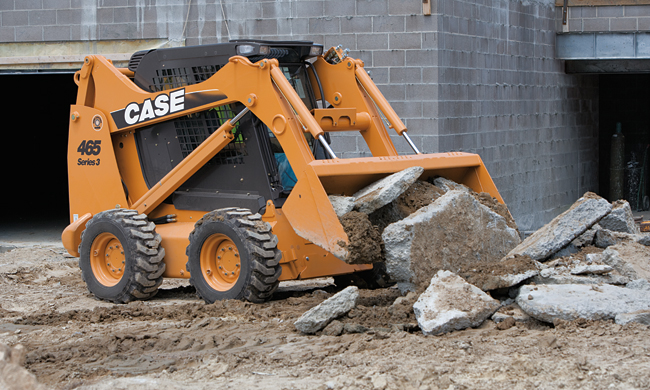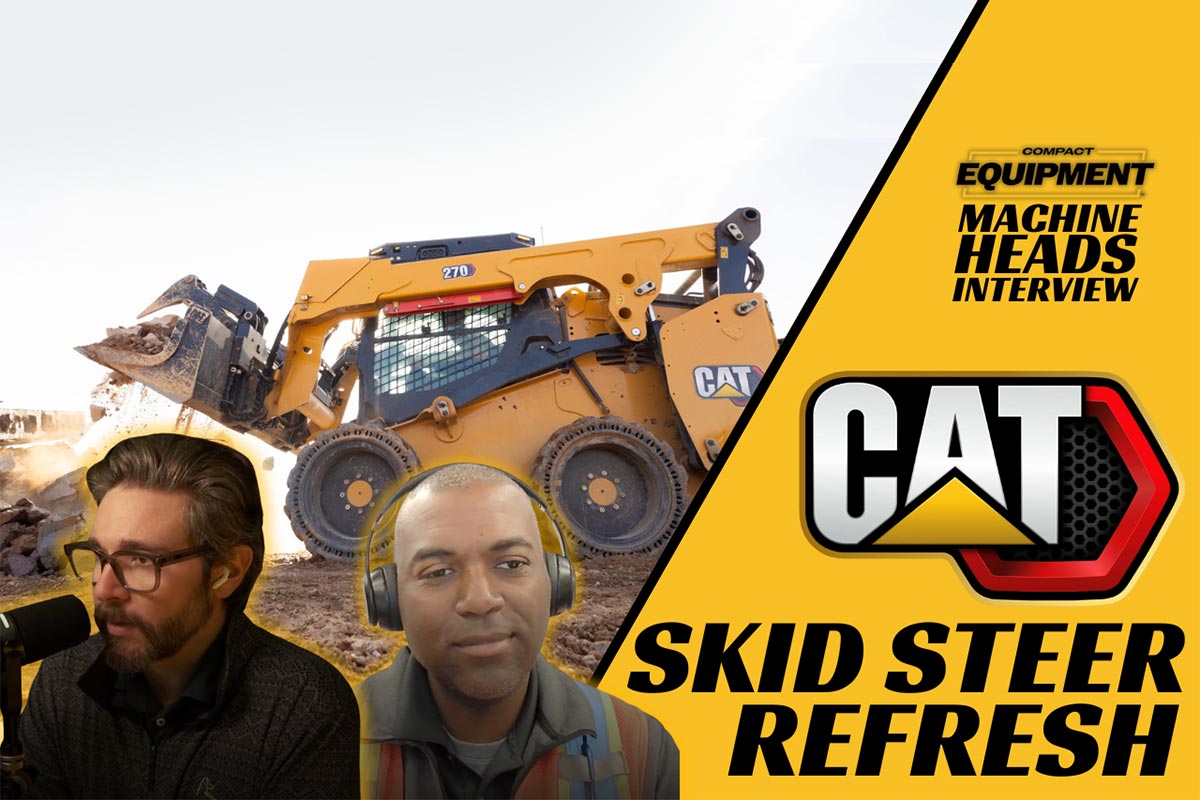Skid Steer Maintenance Regimen

Skid steers are the staple of almost every contractor’s fleet. From an application standpoint, skid steers can do practically everything. With more than 75 attachments available, skid steers are the most versatile machines on the market. They also offer low ground pressure and a small footprint in applications like landscaping where protecting the worksite is important. Basically, skid steers provide high productivity at a low cost of operation.
Getting the most out of your skid steer ultimately requires disciplined attention to its maintenance. In addition to following the manufacturer’s recommended maintenance procedures, understand how your operating environment affects skid steer maintenance. For example, if you’re working in a hot and dusty environment, you’ll need to grease more frequently and closely monitor operating temperatures. Pay attention to any unusual sounds from the machine’s hydraulic system and pivot points. Those are audio cues for extra maintenance. And watch for visual cues, such as excessive exhaust smoke, that might indicate damaged piston rings.
Engine maintenance is crucial to your overall maintenance regimen. It begins with daily fluid checks — not just the fluid levels, but the condition of the fluids. Dirty fluids need to be changed, regardless of the recommended interval. Follow manufacturers’ recommendations on change intervals. For example, some models still require a break-in fluid change within the first 100 hours of operation.
Keep your engine’s fuel injectors clean by adding injector cleaner to your fuel supply according to the manufacturers’ recommendations. Check the fuel system’s water separator regularly and be sure to drain excess water. In cold-weather climates, water in the fuel can freeze or inhibit engine efficiency.
Speaking of fuel, buy diesel fuel from high-quality suppliers that properly maintain their fuel storage tanks. Understand that fuel formulations may change according to the season. In northern climates during the winter, the diesel fuel you buy is re-formulated to aid in cold starting conditions. This may result in a small degradation of performance, but it’s a trade-off worth accepting if you’re concerned about starting the engine in sub-freezing temperatures.
The key to successful ongoing maintenance is establishing good habits and following them daily. Operators should be trained to check all fluid levels daily — especially hydraulic fluid and engine oil — and visually inspect filters for evidence of leaks. Most skid steers provide easy access to fluid gauges and filters. Check the machine’s grease points every day — most machines have about 10 to 15 points that need daily greasing. Inspect the radiator to make sure it’s not clogged with debris. The few minutes spent on daily maintenance can prevent costly downtime and can help extend the machine’s useful life. Additionally, it is always a good idea to wash and clean your machine regularly.
Concerned about parts and service? If you buy a well-respected brand from a major manufacturer, you should find parts and service without any problem. The service personnel at authorized dealerships of the major brands are generally knowledgeable about older models. Certainly the older a model is, the more likely you’ll have difficulty getting parts and service for it. You may have to wait for a week or two when ordering a hard-to-find part.
A new skid steer, properly maintained, usually will stay on the job for about 5,000 hours before the original owner trades it in. A second owner may keep the machine running for another five to eight years at a reduced workload. It’s not uncommon for a skid steer to keep working for up to 20 years or longer on a more casual basis.
Tier 4 Technology Designed for Easy Maintenance
Case and other manufacturers already offer some skid steer and other compact equipment models that meet Tier 4 Interim standards. Key to meeting new Tier 4 emission requirements is reducing carbon monoxide, hydrocarbons, nitrogen oxides (NOx) and particulate matter (PM). Emissions limits are particularly focused on curbing airborne NOx and PM. Equipment manufacturers have identified two different technologies for meeting emission requirements: selective catalytic reduction (SCR) and cooled exhaust gas recirculation (EGR). At Case, we see advantages to both technologies, depending on engine size load and application demands.
In an EGR system, exhaust gases are cooled, blended with fresh air and then returned to the cylinder, lowering combustion temperatures and dramatically reducing nitrogen oxides. PM levels are then reduced through use of an after-treatment exhaust filter system. The basic engine technology does not change dramatically from Tier 3, so service and maintenance measures remain familiar.
In an SCR system, the engine is tuned for maximum efficiency, and the high combustion temperatures reduce PM levels but increase NOx levels. SCR is an after-treatment system that creates a chemical reaction by adding diesel exhaust fluid (DEF). This transforms the NOx into nitrogen and water, substances that occur naturally in the atmosphere. No particulate filter is required. The design is inherently simple, which reduces long-term maintenance expenses. Maintenance for both systems is very easy. Easy-to-access, environmentally friendly service ports, together with the green plugs that are built into most Case equipment, allow for fast fluid changes, while protecting from spills that could contaminate the ground.
The SCR system only requires regularly filling the DEF tank. A warning light will signal when the diesel exhaust fluid level is running low. Refilling the DEF tank can be done as part of the regular maintenance when checking fluid levels or when refueling. The SCR system uses a DEF controller that includes a small filter. Periodic replacement of this easy-to-reach DEF filter ensures that clean diesel exhaust fluid reaches the injector. With EGR, the diesel particulate filter (DPF) is designed to last for thousands of hours, so there will be very little effect on maintenance. The DPF does require periodic regeneration that will vary depending on the engine load. On machines with particularly heavy work schedules or long life, changing the filter is easy to do, as the DPF system is very accessible.
With Tier 4-compliant Case engines, you can continue to use biodiesel following application guidelines for Tier 3 equipment. There aren’t any additional maintenance requirements as a result of EGR or SCR use. Learn more about Tier 4 solutions from Case at www.CaseCE.com/Tier4_NA.com.
Curtis Goettel is a marketing manager with Case Construction Equipment, based in Racine, Wis.







Comments are closed here.